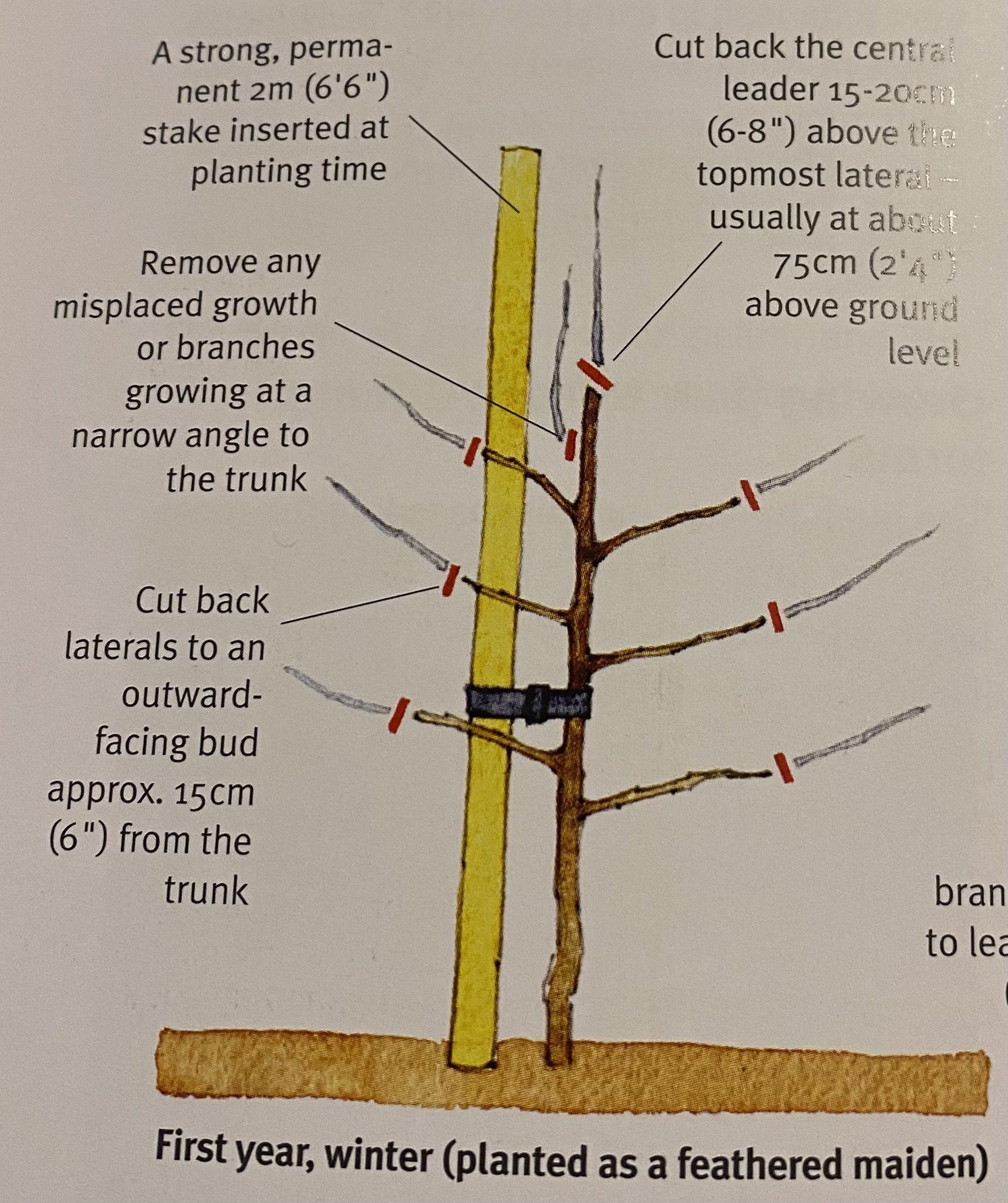A short guide to pruning
Pic taken from Ben Pike: the Fruit Tree handbook
Pruning or tree care often scares the new grower more than anything else. Here I only offer tips which should help you. Get a quality book/manual and try to see someone experienced in action. Here are a few key rules and tips to start formative pruning.
Tools & Hygiene –Pruning is surgery. Buy good quality secateurs and a pruning saw that make clean cuts. Don’t spread diseases. When moving from tree to tree or after pruning a diseased branch sterilise your tools with surgical spirits.
Correct cuts – The cut should slope as shown.
Winter & Summer Pruning – Have different effects. Winter pruning increases new branch production and slows down flower/fruit formation. Best time is late January to mid- February. Summer pruning slows branch growth and encourages flower/fruit formation. This comes into its own from 3 years after planting.
Pruning to buds – once you can identify what you’re looking at you can start to prune to buds with some confidence of results.
Shaping your tree by pruning
Here is some advice and tips for shaping your tree to allow for good production.
Shaping your tree: We are detailing here the creation of the bush type tree which has a crown of 6-8 main branches, evenly spaced with an open centre. This is very common for trees and soft fruit bushes and allows good air and light circulation. It is also important to help ripen fruit and minimise disease build ups. We suggest the following actions:
Year 1 (Winter) – If you have a 1yr old tree and you plant in winter all you need do is prune it to a bud at a height right for the rootstock. A dwarf tree between 50- 60cms; a larger tree, between 80cms to 1.3m. The top 3 or 4 buds at the top of the remaining stem will form vigorous branches. You shouldn’t need to prune anything more until the following winter.
Year 2 - Select the strongest 3 or 4 branches to develop. Cut them back to about half of their length to a point where there are 2 leaf buds both pointing in directions facing up and away from the centre of the tree. If you have any laterals or lower branches left on the trunk leave them until the following winter.
Year 3 - You should now have a tree with 6 – 8 identifiable leading branches plus several side branches (laterals) and possibly the odd fruit bud here and there. Now thinking becomes a little more involved and at this stage we recommend you have do some reading or get advice on some of our courses.
You should prune all your new leaders, half of them by another 50% to outward buds and the others by perhaps 30%. You want to keep new growth coming upward and out from the centre of the tree but allow each to maintain its own distinct space with good air and light circulation.
Aside from these formative techniques it’s always necessary to prune out very weak or diseased growth as a priority. Canker infected stems should be removed whenever you find it, regardless of season.
If you follow these guidelines and remember to ensure that every branch has its own distinct space and equal access to air and light you will have established the foundations of healthy growth for the more mature and productive phase or a fruit tree or bush’s life.
Note: I am hugely indebted to my friend and former colleague Phil Wheal in compiling these notes.
My favourite book is ‘The Fruit Tree Handbook’ by Ben Pike on Green Books. It covers everything you’ll need.

